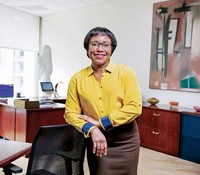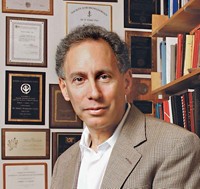Advertisement
Grab your lab coat. Let's get started
Welcome!
Welcome!
Create an account below to get 6 C&EN articles per month, receive newsletters and more - all free.
It seems this is your first time logging in online. Please enter the following information to continue.
As an ACS member you automatically get access to this site. All we need is few more details to create your reading experience.
Not you? Sign in with a different account.
Not you? Sign in with a different account.
ERROR 1
ERROR 1
ERROR 2
ERROR 2
ERROR 2
ERROR 2
ERROR 2
Password and Confirm password must match.
If you have an ACS member number, please enter it here so we can link this account to your membership. (optional)
ERROR 2
ACS values your privacy. By submitting your information, you are gaining access to C&EN and subscribing to our weekly newsletter. We use the information you provide to make your reading experience better, and we will never sell your data to third party members.
Careers
ACS Award in the Chemistry of Materials
January 1, 2007
| A version of this story appeared in
Volume 85, Issue 1
Sponsored by DuPont
Robert S. Langer didn't become a pioneer at the interface of chemistry and biology by design. He entered Cornell University as an engineering major mainly because he had excelled in math and science as a high school student in Albany, N.Y. And he ended up a chemical engineer because, he says, "I liked chemistry and didn't like a number of the other courses."
Langer began to explore the biological side of chemistry while pursuing his doctorate in chemical engineering at Massachusetts Institute of Technology. But his eyes really opened when, after completing his thesis, he signed up for a postdoc in Judah Folkman's lab at Children's Hospital Boston. "Most of my friends went into the oil and chemical industries," he recalls. "I was a postdoc in a surgery department. That gave me a lot of ideas."
After the postdoc, Langer returned to MIT and has taught there ever since. Today, he is one of just 13 Institute Professors at MIT and one of very few people to be elected to all three U.S. national academies. He has received more than 150 major awards including, in 2002, the Charles Stark Draper Prize, considered the equivalent of the Nobel Prize for engineers.
Langer's renown is due in no small part to the contribution he has made to public health. David A. Tirrell, a colleague who chairs Caltech's division of chemistry and chemical engineering, says Langer is "without question the outstanding contributor—worldwide—to the development of new materials and new materials systems for tissue engineering and controlled delivery of pharmaceuticals."
When Langer began working on drug delivery in the late 1970s, the conventional wisdom was that only a very few low-molecular-weight lipophilic compounds could be released from polymers in a controlled fashion. Langer proved this wisdom wrong through a painstaking process of customized molecular design. "I found several hundred approaches that didn't work before I found one that did," he says.
Today, Langer's polymers are used to deliver proteins, glycoproteins, peptides, DNA, RNAi, ionic substances, and more. His patents have been licensed or sublicensed by Alkermes, Eli Lilly & Co., Johnson & Johnson, and close to 200 other pharmaceutical, chemical, and medical device companies. He is also exploring nanotechnology as yet another way of getting drugs to their intended target.
As important as is Langer's work in controlled delivery and release, Caltech's Tirrell maintains that his more recent research in tissue engineering will have even farther reaching consequences. Working with people such as Joseph P. Vacanti, a surgeon at Harvard Medical School and Massachusetts General Hospital, Langer created synthetic polymer systems that can be seeded with cells and placed in the body to grow skin and other tissue. Several companies have licensed the technology, Langer says.
Given the health-related applications of his work, Langer is very much involved with industry and has sat, at various times, on 15 company boards of directors and 30 scientific advisory boards. He claims, though, to have no desire to make the jump from academia to the for-profit world.
"When you work at a company you have to focus," Langer says. "I've enjoyed coming up with different ideas on all kind of things and then watching them spin out." He also enjoys teaching and training future generations of scientists. Indeed, more than 150 students who graduated from his MIT labs are now themselves teaching and researching at institutions around the world.
Langer, 58, says he is eager to move more of his ideas out of the lab and into the clinic where they can begin to help people in need. He also looks forward to sending more young scientists out into the world. "The chemical aspects of biomedical engineering are incredibly important and will only get more so," he says.
The award address will be presented before the Division of Polymer Chemistry.—Michael McCoy






Join the conversation
Contact the reporter
Submit a Letter to the Editor for publication
Engage with us on Twitter